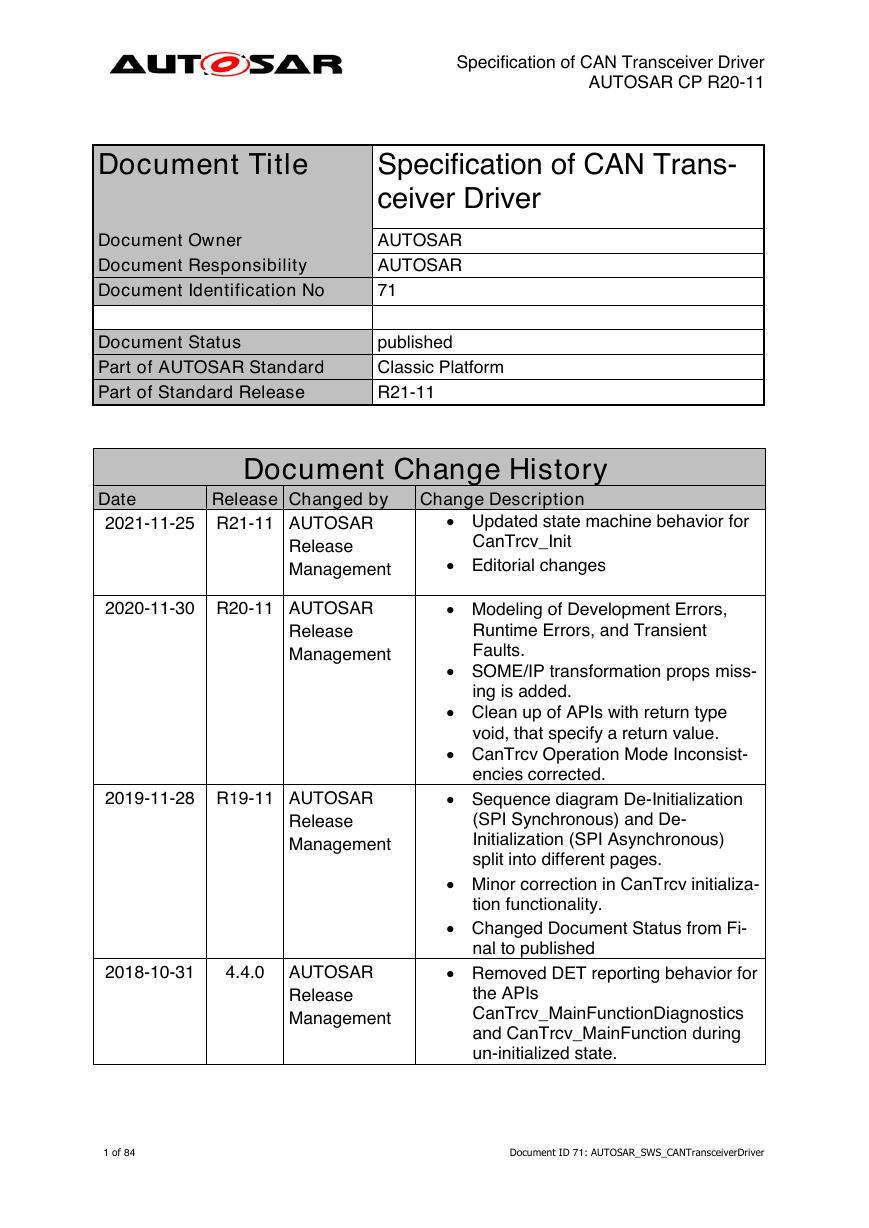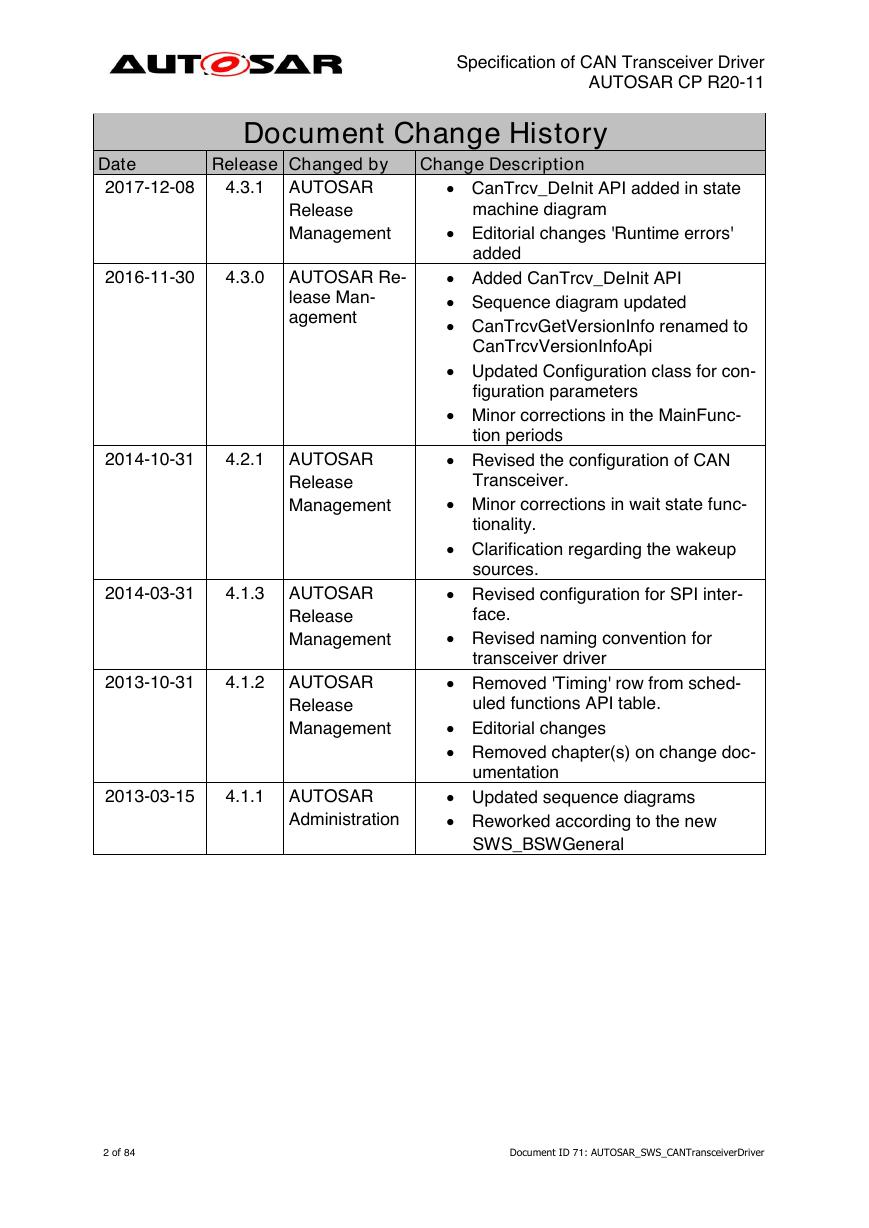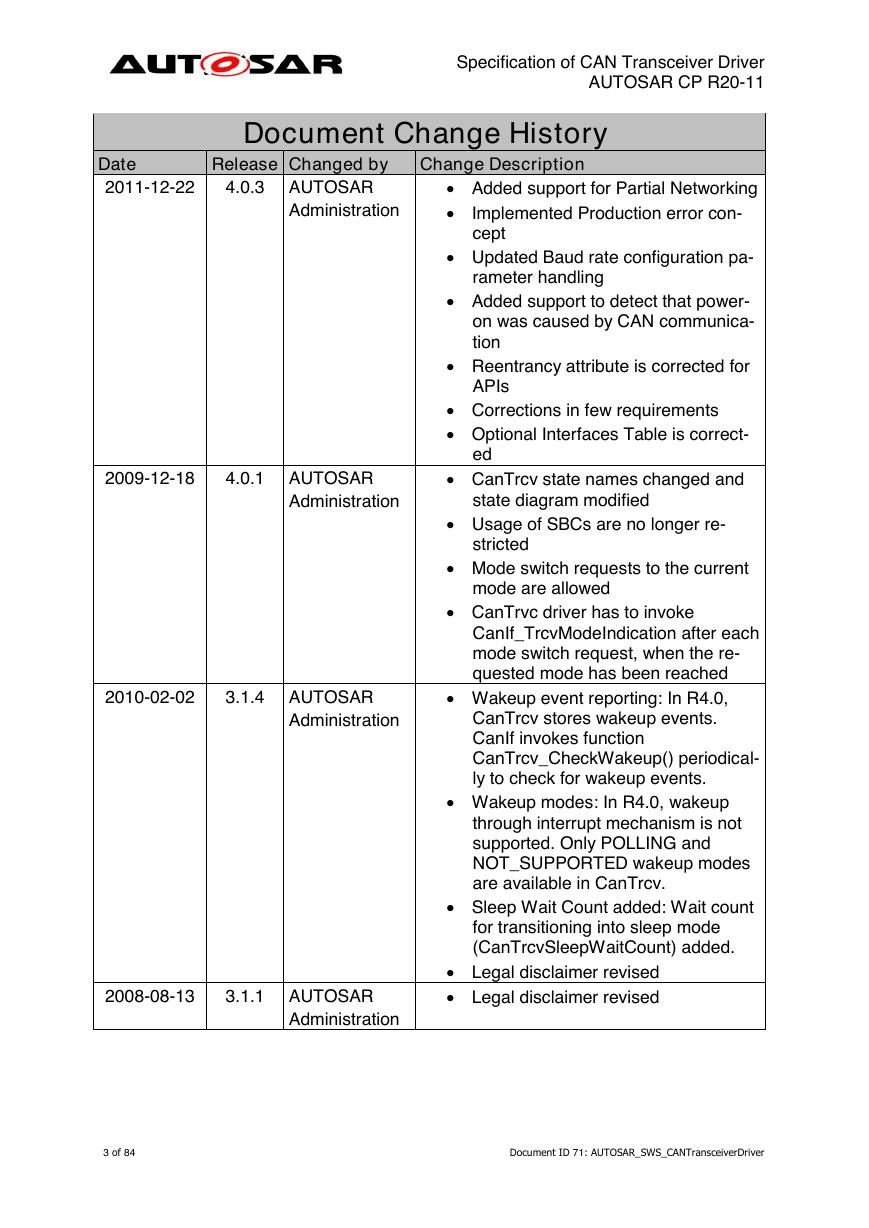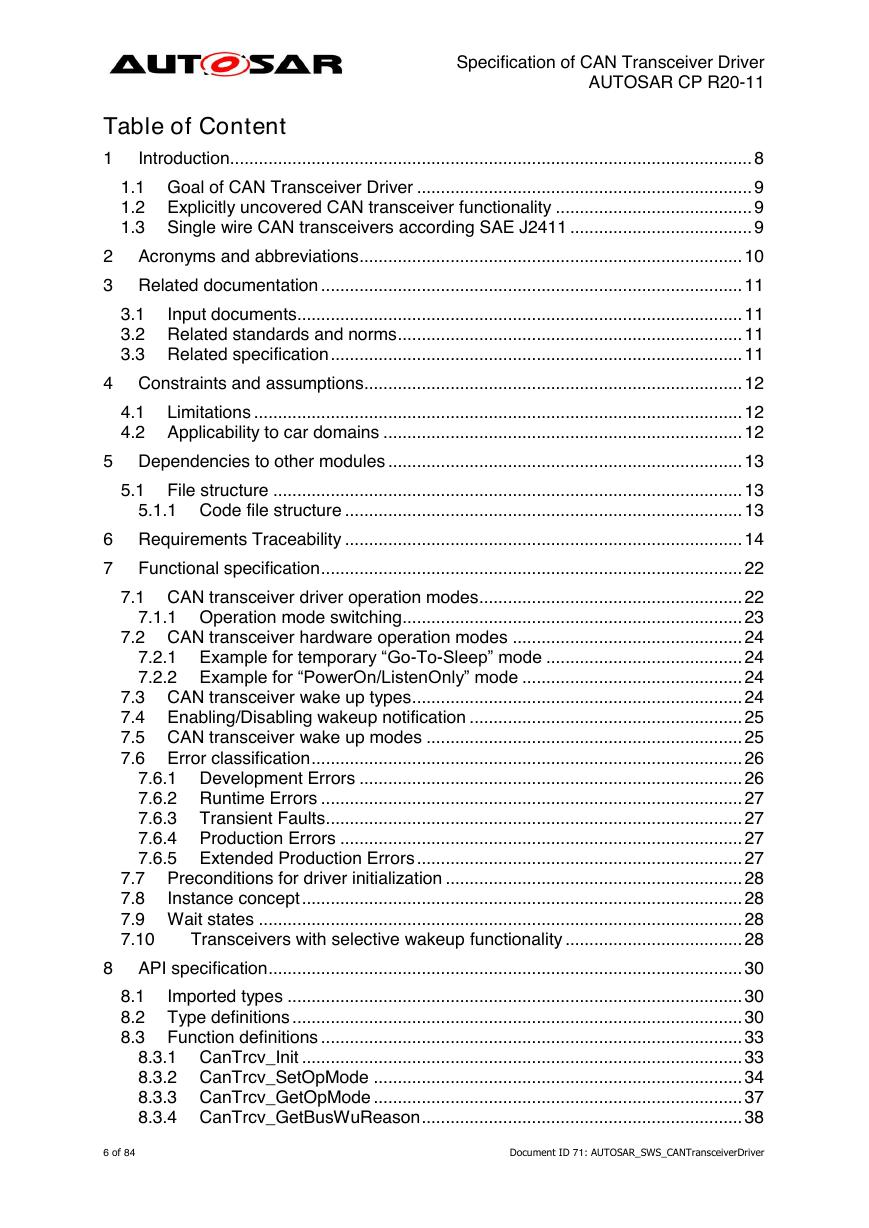1 Introduction
1.1 Goal of CAN Transceiver Driver
1.2 Explicitly uncovered CAN transceiver functionality
1.3 Single wire CAN transceivers according SAE J2411
2 Acronyms and abbreviations
3 Related documentation
3.1 Input documents
3.2 Related standards and norms
3.3 Related specification
4 Constraints and assumptions
4.1 Limitations
4.2 Applicability to car domains
5 Dependencies to other modules
5.1 File structure
5.1.1 Code file structure
6 Requirements Traceability
7 Functional specification
7.1 CAN transceiver driver operation modes
7.1.1 Operation mode switching
7.2 CAN transceiver hardware operation modes
7.2.1 Example for temporary “Go-To-Sleep” mode
7.2.2 Example for “PowerOn/ListenOnly” mode
7.3 CAN transceiver wake up types
7.4 Enabling/Disabling wakeup notification
7.5 CAN transceiver wake up modes
7.6 Error classification
7.6.1 Development Errors
7.6.2 Runtime Errors
7.6.3 Transient Faults
7.6.4 Production Errors
7.6.5 Extended Production Errors
7.7 Preconditions for driver initialization
7.8 Instance concept
7.9 Wait states
7.10 Transceivers with selective wakeup functionality
8 API specification
8.1 Imported types
8.2 Type definitions
8.3 Function definitions
8.3.1 CanTrcv_Init
8.3.2 CanTrcv_SetOpMode
8.3.3 CanTrcv_GetOpMode
8.3.4 CanTrcv_GetBusWuReason
8.3.5 CanTrcv_VersionInfo
8.3.6 CanTrcv_ SetWakeupMode
8.3.7 CanTrcv_GetTrcvSystemData
8.3.8 CanTrcv_ClearTrcvWufFlag
8.3.9 CanTrcv_ReadTrcvTimeoutFlag
8.3.10 CanTrcv_ClearTrcvTimeoutFlag
8.3.11 CanTrcv_ReadTrcvSilenceFlag
8.3.12 CanTrcv_CheckWakeup
8.3.13 CanTrcv_SetPNActivationState
8.3.14 CanTrcv_CheckWakeFlag
8.3.15 CanTrcv_DeInit
8.4 Scheduled functions
8.4.1 CanTrcv_MainFunction
8.4.2 CanTrcv_MainFunctionDiagnostics
8.5 Call-back notifications
8.6 Expected Interfaces
8.6.1 Mandatory Interfaces
8.6.2 Optional Interfaces
8.6.3 Configurable interfaces
9 Sequence diagram
9.1 Wake up with valid validation
9.2 Interaction with DIO module
9.3 De-Initialization (SPI Synchronous)
9.4 De-Initialization (SPI Asynchronous)
10 Configuration specification
10.1 How to read this chapter
10.2 Containers and configuration parameters
10.2.1 CanTrcv
10.2.2 CanTrcvGeneral
10.2.3 CanTrcvConfigSet
10.2.4 CanTrcvChannel
10.2.5 CanTrcvAccess
10.2.6 CanTrcvDioAccess
10.2.7 CanTrcvDioChannelAccess
10.2.8 CanTrcvSpiAccess
10.2.9 CanTrcvSpiSequence
10.2.10 CanTrcvDemEventParameterRefs
10.2.11 CanTrcvPartialNetwork
10.2.12 CanTrcvPnFrameDataMaskSpec
10.3 Published Information
11 Not applicable requirements
















 V2版本原理图(Capacitive-Fingerprint-Reader-Schematic_V2).pdf
V2版本原理图(Capacitive-Fingerprint-Reader-Schematic_V2).pdf 摄像头工作原理.doc
摄像头工作原理.doc VL53L0X简要说明(En.FLVL53L00216).pdf
VL53L0X简要说明(En.FLVL53L00216).pdf 原理图(DVK720-Schematic).pdf
原理图(DVK720-Schematic).pdf 原理图(Pico-Clock-Green-Schdoc).pdf
原理图(Pico-Clock-Green-Schdoc).pdf 原理图(RS485-CAN-HAT-B-schematic).pdf
原理图(RS485-CAN-HAT-B-schematic).pdf File:SIM7500_SIM7600_SIM7800 Series_SSL_Application Note_V2.00.pdf
File:SIM7500_SIM7600_SIM7800 Series_SSL_Application Note_V2.00.pdf ADS1263(Ads1262).pdf
ADS1263(Ads1262).pdf 原理图(Open429Z-D-Schematic).pdf
原理图(Open429Z-D-Schematic).pdf 用户手册(Capacitive_Fingerprint_Reader_User_Manual_CN).pdf
用户手册(Capacitive_Fingerprint_Reader_User_Manual_CN).pdf CY7C68013A(英文版)(CY7C68013A).pdf
CY7C68013A(英文版)(CY7C68013A).pdf TechnicalReference_Dem.pdf
TechnicalReference_Dem.pdf